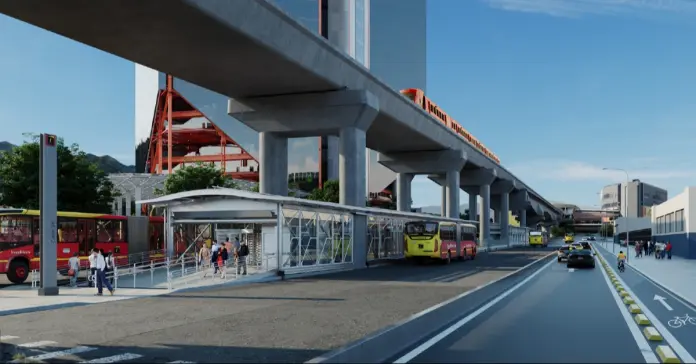Cuatrecasas advises on Bogotá’s most important transit infrastructure project

Don’t miss our content
SubscribeCuatrecasas has advised Metro Línea 1 S.A.S. on securing two revolving credit facilities to build one of Colombia’s most outstanding transit infrastructure projects: the first metro line in Bogotá.
The Bogotá Metro, planned over 80 years ago, will be able to carry 72,000 passengers per hour in each direction, totaling around 1 million passengers a day. The 23.9 km route will cross nine districts served by 16 modern stations, significantly reducing transit time. It will connect the Portal Américas terminus with the Calle 72 station in only 27 minutes, a third of the time that the journey currently takes.
The first line of credit of USD 230 million was provided jointly by the Bank of China (Panama Branch) and the Industrial and Commercial Bank of China (Panama Branch). The second line of COP 1.2 billion was provided by the National Development Finance (FDN), BBVA Colombia and Banco de Bogotá.
Cuatrecasas partner Juan Carlos Puentes said: “This historic milestone would not have been possible without the joint efforts and collaboration of all the parties involved. The project is a clear example of how the partnering of the public and private sectors—in the framework of projects awarded in concession—can achieve goals that, for decades, seemed unachievable. This is only the beginning of a steady, continuous development that will include more metro lines, light rail, and the consolidation of a mass transit system worthy of the public, and that will have a positive impact on the lives of everyone in Bogotá. Congratulations to our clients, China Harbour Engineering Company and Metro Línea 1, and to all the parties involved.”
As well as improving mobility, the project will revitalize the urban environment, upgrading 1,400,000 m² of public space. By the end of 2025, 65% of the project is expected to have been completed, making it one of the region’s longest metro lines.
In addition, it will stimulate economic growth and employment. During its implementation, 17,000 new direct and indirect jobs are expected to be created.
From an environmental viewpoint, the metro will reduce the capital city’s carbon footprint, thanks to its energy efficiency and the integration of sustainable criteria in its design, construction and operation. It is estimated that Bogotá will stop using 59 billion gallons of fossil fuel, thus preventing the annual emission of 171,000 tons of CO2. When it comes into operation, it will only represent an additional 1% of the city’s energy demand.
The Cuatrecasas advisory team in Bogotá was led by Finance partners, Manuel Quinche and Juan Carlos Puentes, with the support of Angie Gómez, Lorenzo Lizarralde and María Verónica Hernández. Manuel Gómez, Carlos Méndez and Emilio Torres also participated from the Infrastructure Practice.
History of Bogotá Metro
The Bogotá Metro is an infrastructure project that the city has awaited for decades. Since the 1940s, it has gone through various stages before becoming a reality:
- 1942–1968: Mayors Carlos Sanz de Santamaría, Fernando Mazuera, Roberto Salazar, Jorge Gaitán Cortés and Virgilio Barco, as well as former President Gustavo Rojas Pinilla, proposed the construction of the metro and implemented technical studies for its construction.
- 1987–2000: With 3.9 million inhabitants to consider, a proposal by the Italian company Intermetro SPA to rehabilitate the existing railroad tracks was evaluated, and then ruled out in 1988. Between 1993 and 1996, Mayors Jaime Castro and Antanas Mockus put forward mobility policies that included a metro network. This did not materialize due to its high cost and financing difficulties. In 2000, the Transmilenio mass transit bus system began to operate.
- 2016–2024: The Metro de Bogotá company was created, which defined a completely elevated route for the First Line. In 2019, the concessionaire Metro Línea 1 S.A.S. was awarded the construction, and in October 2020, the commencement of works was signed, marking a historic milestone for the capital city.
Don’t miss our content
Subscribe